| Columns Retired Columns & Blogs |
Kinda surprised Emotiva sent review samples of a product that's being discontinued - what's the point?
I used DRA Labs' MLSSA system and a calibrated DPA 4006 microphone to measure the Emotiva Airmotiv T2's frequency response in the farfield, and an Earthworks QTC-40 microphone for the nearfield responses. Emotiva specifies the Airmotiv T2's sensitivity as a very high 91dB/2.83V/m; my estimate was within experimental error of that number, at 90.3dB(B)/2.83V/m. Props to Emotiva for an honest high-sensitivity spec, even if they incorrectly refer to it as "efficiency" in the speaker's manual. The Airmotiv T2's impedance is specified as 4 ohms. Fig.1 shows that the T2's impedance magnitude does average close to 4 ohms, though the minimum value is 2.85 ohms at 112Hz, and there is an amplifier-taxing combination of 4 ohms and –53° electrical phase angle at 78Hz. The Airmotiv T2 will need to be used with an amplifier comfortable driving low impedances.
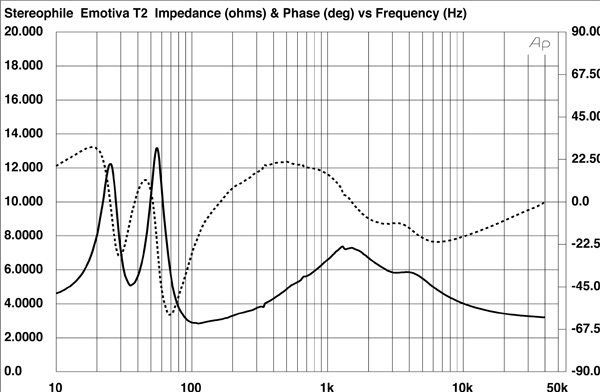
There are a couple of small discontinuities in the impedance traces, the strongest lying between 300 and 400Hz. When I investigated the enclosure's vibrational behavior with a plastic-tape accelerometer, I found a strong resonant mode at 336Hz that was present on all surfaces. Fig.2 shows a cumulative spectral-decay plot calculated from the accelerometer's output when it was fastened to one of the sidewalls level with the midrange drive-unit. Though this mode had a high Q (Quality factor), which will work against its being excited, it is sufficiently low in frequency that I would have thought it might give rise to some midrange coloration. I note that Tom Norton commented on Howe Gelb's voice sounding "a bit thickened."
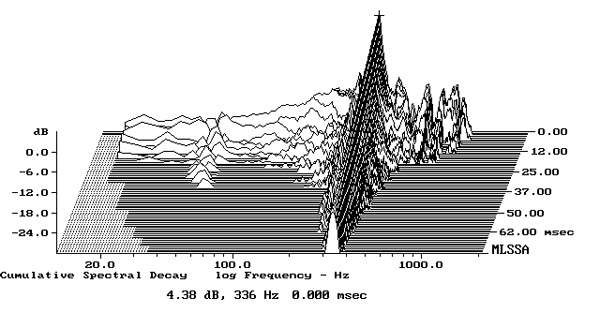
The impedance-magnitude trace centers on 36Hz, which suggests that this is the two woofers' reflex tuning frequency. When measured in the nearfield, the woofers, which behaved identically, had the expected minimum-motion notch in their outputs at 36Hz (fig.3, blue trace). (At this frequency, the cones are held stationary by the back pressure from the port resonance.) The port's output (red trace) peaks a little lower in frequency, and while its upper-frequency rolloff is disturbed by a couple of resonant modes, these are more than 20dB down compared with the woofer's level. Their audibility will be further reduced by the fact that the port fires to the speaker's rear. Higher in frequency in fig.3, the woofers (blue trace) are crossed over to the midrange unit (green) at about 340Hz, though the latter extends lower in frequency than I would have expected, not starting its ultimate high-order, high-pass rolloff until below 200Hz.
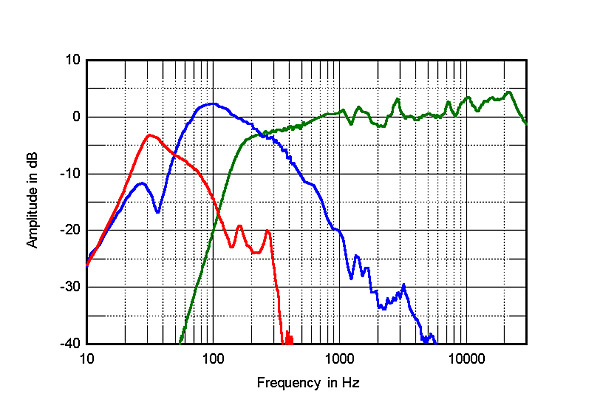
Higher in frequency in fig.3, the green trace shows the output of the T2's midrange unit and tweeter on the tweeter axis. The response is basically evenly balanced, though a sharply defined peak can be seen just below 3kHz, with another at 7kHz, and there is a slight rising trend in the top audio octave. These factors can also be seen in fig.4, the black trace above 300Hz showing the Airmotiv T2's farfield response averaged across a 30° horizontal window centered on the tweeter axis.
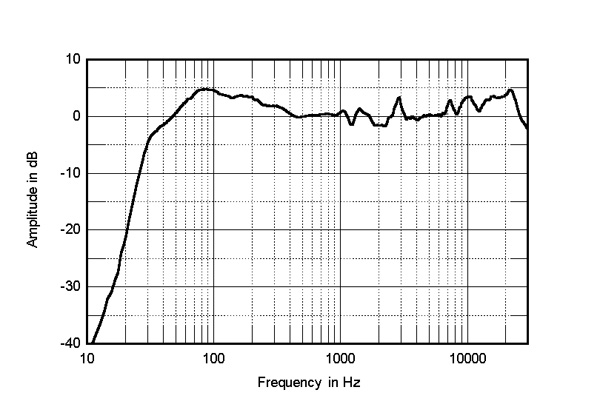
The black trace below 300Hz in fig.4 shows the complex sum of the nearfield midrange, woofer, and port responses, taking into account acoustic phase and the different distances of each radiator from a nominal farfield microphone position. Because the nearfield measurement technique assumes that the drive-unit is mounted in a true infinite baffle—ie, one that extends to infinity in both the vertical and horizontal planes—this results in a peak in the upper bass with a speaker that is actually maximally flat in the bass. Taking this bass peak into account, the Emotiva's woofer tuning appears to be maximally flat, with the low-frequency –6dB point lying at the port tuning frequency. I'm little puzzled, therefore, why TJN found the T2's low frequencies to occasionally sound a little lightweight, especially as the port is placed close to the floor and will benefit from some boundary reinforcement.
The plot of the Airmotiv T2's horizontal dispersion (fig.5) indicates a well-controlled radiation pattern. The evenly spaced contour lines in this graph suggest that a pair of these speakers will offer stable stereo imaging, due to the fact that their direct sound and the reflections of that sound from the room's sidewalls will not have different characters. However, the Airmotiv tweeter becomes relatively directional above 8kHz, which, in a typical room, will balance the rising top-octave output noted earlier. In the vertical plane (fig.6), the Airmotiv T2's balance doesn't change appreciably over a wide (+5/–10°) window centered on the tweeter axis, which is 38" above the floor.
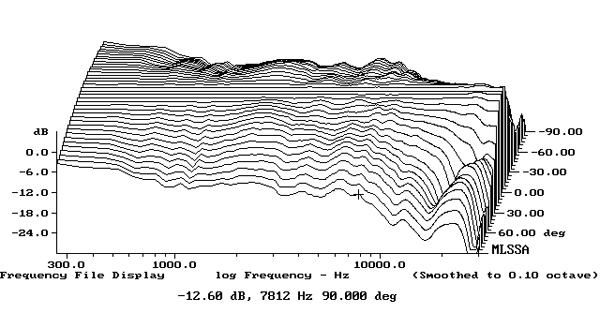
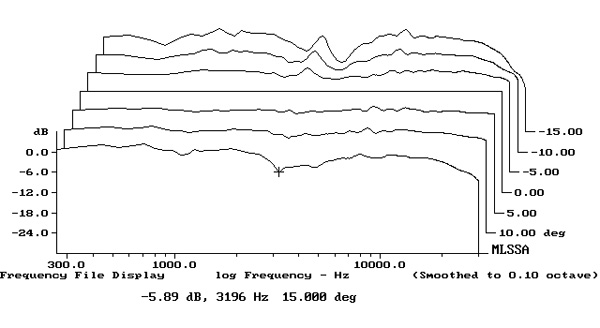
In the time domain, the Airmotiv T2's step response (fig.7) indicates that the tweeter and midrange are connected in negative acoustic polarity, the woofers in positive polarity. The decay of the tweeter's step blends smoothly with the start of the midrange unit's step, and the decay of the latter's step blends smoothly with the start of the woofers' step, suggesting optimal crossover design. The Emotiva's cumulative spectral-decay plot (fig.8) was superbly clean in the treble, but that on-axis peak just below 3kHz is associated with a ridge of delayed energy.
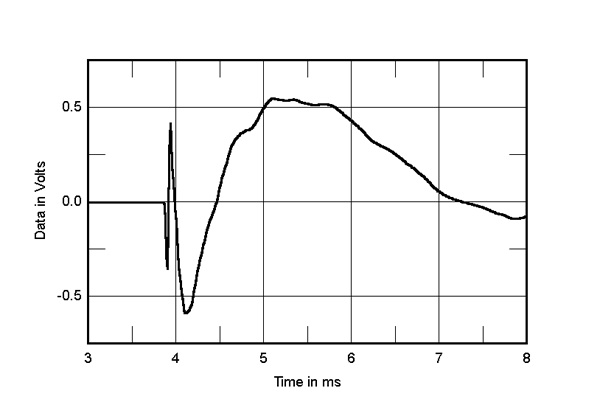
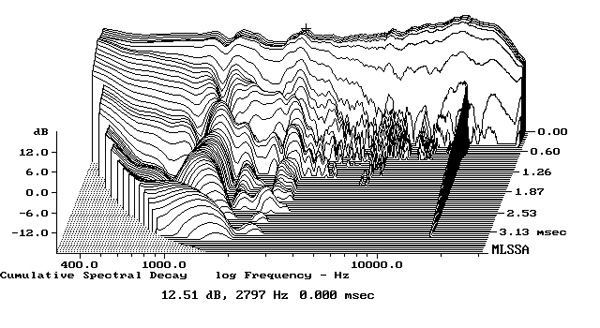
Writing up these measurements, it was easy to forget that the Emotiva Airmotiv T2 is an affordable speaker. Yes, there are a couple of measured problems, but these should be put in context: This speaker costs a dollar short of $1000/pair.—John Atkinson

Kinda surprised Emotiva sent review samples of a product that's being discontinued - what's the point?


T1 and T2 are on closeout, T-Zero and B1 are reduced in price - https://emotiva.com/collections/airmotiv.
Stinks that they don't make active monitors any more, the Airmotiv4 (reviewed here, which helped me decide to buy a pair) are great li'l speakers.

Please note that the T1 and the T2 are being updated with minor cosmetic revisions. They will continue in the line at the same prices with idential specifications and performance. The new versions are called the T1+ and the T2+.

Who knows how long the review samples were in Stereophile's hands...

Who knows how long the review samples were in Stereophile's hands...
Thomas J. Norton received the review samples of this speaker at the beginning of January 2019 and submitted his review text on February 9. As far as we aware, the T2s have not been discontinued.
John Atkinson
Technical Editor, Stereophile

OK, that is pretty fast turn around. Now we know! Thanks.

Fascinating shift in hi fi world around use of EQ and tone controls. My Rogue Sphinx has no pre out so I can't experiment with the Schiit EQ or similar, but I think this is a good trend. Also I just bought Emotiva's (end of life) ERC 3 HDCD player. The Grateful Dead, those pioneers of live and studio sound, still release CDs using this process. Wrote them to ask why but sadly no reply.

You can still use an external EQ and/or DSP unit between your main source and the input of your integrated amp, if the EQ/DSP unit has a bypass switch .......... dbx makes some very good quality pro EQ units under $500, available at Sweetwater :-) ...........
dbx EQ units I'm referring to are all analog :-) ..........
Schiit Loki parametric EQ unit also has a passive bypass switch :-) .........

An ideal situation would be to have a processor loop in the pre-amp section of an integrated or a stand alone pre-amp, which can be switched in and out :-) .........

Thanks for reviewing another reasonably priced speaker in Stereophile. The KEF product on this months cover is within the means of most households as well. Keep this up please.

"That first Heil AMT was huge and bipolar; today's AMTs are much smaller and, typically, radiate soundwaves only to the front."
Heil's amt tweeters are Dipoles, meaning that the front wave and back wave are out of phase.
Bipolar indicates that the front and back waves are in phase with each other, and generally requires a separate driver array mounted on the rear wired in positive polarity. A good example of this would be many of past and current Definitive Technology speakers.

A possible solution to the bass suckout in TJN's listening room is to add one or more small subwoofers in locations in the room that are more optimal for producing bass that will reach the listening position without vanishing. It's important to note the large discrepancy between TJN's measured in-room bass performance and JA's measurements. The T2 is not a speaker that shows a measured deficiency in the bass range.